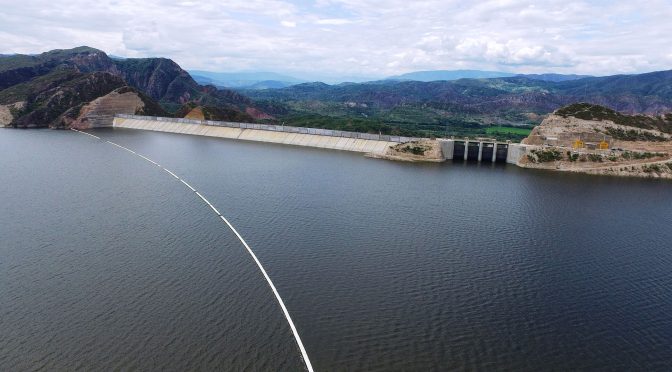Digitalization and robotics have very quickly risen to play a key role in the hydropower industry. Robots and drones are used to carry out inspections in areas where there’s insufficient space or that pose a danger to humans. And EGP personnel are at the forefront of developing such systems.
Hydropower has a long history behind it, it’s the oldest renewable energy source that’s ever been used, and a promising future in front of it, one which will see robots playing a prominent role. Indeed, as early as 2020, Enel Green Power was testing a number of robotic systems employed to inspect water pipes from the inside and provide information on their condition. Previously, even with the use of sophisticated digital instruments, such pipe inspections could only be conducted externally, particularly on pipes of a smaller diameter.
Hydropower, continuous innovation
Today, hydropower plants play a key role in ensuring the security and stability of electricity supplies. For this reason, hydropower has a central role to play as a facilitator of the energy transition process, it is therefore essential to maintain and improve plant performance, including through the use of drones and robots.
“In the coming years, collecting data using technologically advanced procedures will make it possible to more accurately and precisely identify the parts of the plant that require maintenance or will enable future problems to be predicted, thus allowing preventive maintenance measures to be employed.”
Stefano Munari, Dams & Civil Infrastructures Safety, O&M Hydro Italia
Open Innovation, identifying the best solutions both within the company and externally
Robotics is a sector that advances very rapidly. Expensive prototypes very quickly become mainstream products. And EGP is playing an important role in this process, not only in terms of partnerships with start-ups and research centers, but also thanks to its own digital innovators who work together to tackle problems and come up with technological solutions – which in some cases turn into new registered patents – including at Innomaker, Enel Green Power’s “camp” for innovators.
This is how a small, versatile robot came into being, for example, small enough to fit in the palm of one hand, to be used for carrying out inspections of confined spaces and conducting preliminary pipe analyses, equipped with thermal, HD and thickness sensors, a robotic arm, a 3D modeling system and a 4K camera.
“This project has paved the way for developing, within the company, a robotic solution capable of assessing the condition of hydropower plants, including in areas that are difficult or impossible for people to access. Making full use of the company’s internal know-how is what’s made the robot possible, both in terms of process knowledge, i.e. identifying the gaps that genuinely need to be filled, as well as expertise in the development of hardware and software for robotic systems.”
Lorenzo Grazzini, Project owner, robotic projects for Hydro Innovation
“The increasingly rapid expansion of the makers community will enable more and more solutions to be designed and made available at low cost and with greater efficiency and reliability. But it will be important to make sure we never interrupt the process of “passing on” sector knowledge and experience to “those who follow”, otherwise a revolutionary technology today will become inappropriate tomorrow because it won’t be understood. The project we’ve developed combines the knowledge gained by “old” employees, who’ve worked in hydropower for decades, with the skills that “young” employees have in using new technologies, and the result is a state-of-the-art, efficient robotic platform that’s capable of meeting any future needs.”
Alberto Mazzaccaro, O&M Hydro, North-West area, Italy
The result of EGP’s collaborative partnerships with start-ups in Columbia is a robot that’s equipped with an “electronic nose” to detect the presence of gas and is designed to conduct support inspections in areas that may pose a danger to humans.
The Open Innovation model, adopted by EGP, also involves working with innovative partners and start-ups to identify solutions that can successfully meet various technological challenges.
It was via this initiative that Hovering was developed, a drone capable of generating three-dimensional maps of enclosed spaces. Designed by a Spanish start-up and employed in tests at the Nuevo Chorro hydropower plant in Andalusia, it can fly into pipelines and perform inspections up to two kilometers away. And then there’s Guardian S which doesn’t fly but crawls like a snake, and is able to perform 360-degree inspections in pipes as narrow as 18 cm in diameter. Designed by a US company, it has undergone testing at the Desedan hydropower plant and at the Vajont dam in the Veneto region of Italy.
These robots aren’t yet autonomous, but are operated remotely by humans, with the data collected also being monitored by humans. In the near future, however, the inspections will become increasingly more autonomous and Artificial Intelligence will also be used to analyze the data collected. And this is Open Innovation too.

